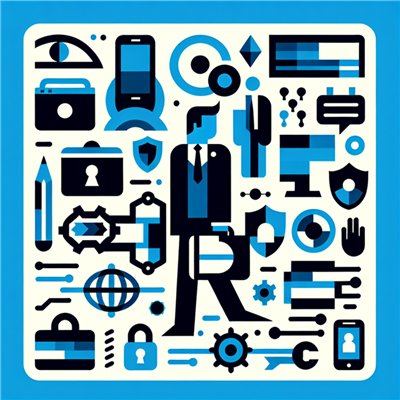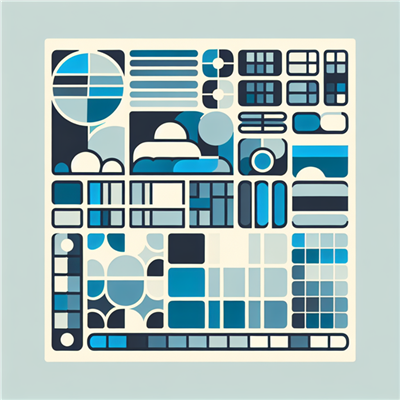.jpgL.jpg)
In today's data-driven world, Tableau has emerged as a powerful tool that is helping businesses to visualize their data in an interactive and understandable way. Tableau is a data visualization tool that allows you to create interactive and meaningful dashboards. Its user-friendly interface and powerful features make it a preferred choice for businesses and individuals who want to make sense of their data.
This beginner’s guide introduces you to Tableau, its core features, and explains why mastering data visualization is essential for modern businesses. Tableau Certification Course is must for businessman and individuals.
What is Tableau?
Tableau is a powerful and intuitive data visualization tool that allows users to analyse, visualize, and share data in a way that is easy to understand. It is designed to make data accessible to everyone, from beginners to advanced users, without requiring in-depth technical expertise. Tableau connects to a wide variety of data sources, enabling users to create interactive dashboards that provide insights into the trends, patterns, and metrics hidden within their data.
Unlike traditional spreadsheets, which can be limited in their capacity to display complex datasets, Tableau can handle large amounts of information from multiple sources and present it visually, making it easier to comprehend and interpret.
Why Data Visualization Matters
Before diving into Tableau’s features, it’s important to understand why data visualization is so critical for businesses today. With the explosion of data in recent years, organizations are now gathering more information than ever before. However, without the ability to effectively analyze and communicate these insights, this data is essentially useless. This is where data visualization comes in.
The Importance of Data Visualization:
- Better Decision Making: Visualization helps stakeholders quickly grasp complex data, enabling faster and more informed decision-making processes.
- Identifying Trends: Visual tools like graphs and charts allow users to easily spot trends, correlations, and outliers, helping businesses predict future outcomes.
- Simplifying Complex Data: Data visualization transforms large, complex datasets into visual formats that are easy to understand, even for non-technical users.
- Storytelling with Data: Data visualization tools like Tableau help tell a story with data, making it more compelling and actionable for decision-makers.
In the modern business landscape, data is everywhere. However, it’s the ability to visualize and interpret this data that sets successful businesses apart.
Getting Started with Tableau
Tableau offers several products, but for beginners, the most commonly used is Tableau Desktop, which allows you to create visualizations and dashboards. Let’s explore the core features of Tableau that make it one of the most powerful tools for data visualization.
1. Connecting to Data Sources
One of the key features of Tableau is its ability to connect to a wide range of data sources. Tableau allows you to pull in data from databases, spreadsheets, cloud services, and even web-based data sources like Google Sheets and Salesforce. Whether you’re working with structured or unstructured data, Tableau can help you seamlessly integrate and combine your datasets.
Once your data is connected, Tableau’s intuitive interface makes it easy to clean, sort, and organize the information to ensure that it’s ready for visualization.
2. Drag-and-Drop Interface
One of the reasons Tableau is so popular is its user-friendly, drag-and-drop interface. Even if you have little to no experience with data analysis tools, you can still create powerful visualizations in Tableau by simply dragging and dropping data fields into the workspace. Tableau automatically suggests the most appropriate chart types based on your data, making it easy to get started with minimal effort.
For example, you can drag the "Sales" field to the columns section and the "Region" field to the rows section to quickly generate a bar chart showing sales by region.
3. Data Visualization Options
Tableau offers a wide variety of visualization options to help you make sense of your data. From bar charts and line graphs to scatter plots, maps, and heat maps, Tableau provides all the necessary tools to create clear and meaningful visualizations.
Here are some of the popular visualization types you can create in Tableau:
- Bar Charts: Perfect for comparing categories of data.
- Line Charts: Useful for showing trends over time.
- Pie Charts: Great for displaying proportions or percentages.
- Heat Maps: Visualize data through color intensity to highlight areas of high and low activity.
- Geographic Maps: Display data with a spatial component, such as sales by country or city.
- Scatter Plots: Illustrate relationships between variables.
With just a few clicks, you can switch between different visualization types to find the one that best represents your data.
4. Interactive Dashboards
One of the most powerful features of Tableau is its ability to create interactive dashboards. Dashboards allow you to combine multiple visualizations into a single, cohesive view. These dashboards are interactive, meaning that users can filter data, drill down into specific areas, and even manipulate the visuals in real-time.
For instance, you can create a sales dashboard that includes a map showing sales by region, a bar chart displaying sales by product category, and a line chart tracking sales trends over time. Each of these visualizations can be connected, so when a user clicks on a specific region in the map, the other visualizations automatically update to reflect the sales data for that region.
Interactive dashboards are perfect for presentations, as they allow stakeholders to engage with the data and explore insights on their own.
5. Real-Time Data Analysis
Tableau allows users to perform real-time data analysis, meaning that your visualizations and dashboards can update automatically as new data is added to the source. This is particularly useful for businesses that need to monitor ongoing activities, such as sales performance or website traffic.
By leveraging real-time data, businesses can make more timely decisions and react quickly to changing conditions.
6. Collaboration and Sharing
Once you’ve created your visualizations and dashboards, Tableau makes it easy to share them with others. With Tableau Server or Tableau Online, you can publish your work so that colleagues and stakeholders can access it from anywhere. These platforms also allow for collaboration, where team members can comment on the visualizations, make edits, and provide feedback in real-time.
Why Mastering Data Visualization in Tableau is Essential for Modern Businesses
Now that you understand the core features of Tableau, let's discuss why mastering data visualization with this tool is critical for businesses today.
1. Enhanced Decision-Making Capabilities
In a world where data is a key driver of business strategy, the ability to quickly interpret and act on data is a competitive advantage. Tableau empowers teams to access real-time data and turn it into actionable insights, improving the decision-making process across all levels of an organization.
2. Improved Operational Efficiency
By providing businesses with a clear view of their data, Tableau helps identify inefficiencies and areas for improvement. For example, a company might use Tableau to visualize their supply chain data, allowing them to pinpoint bottlenecks and optimize processes to reduce costs.
3. Competitive Advantage
Businesses that can effectively leverage data visualization tools like Tableau are better positioned to outperform competitors. By quickly identifying trends and insights, these businesses can respond faster to market changes, customer needs, and industry shifts.
4. Democratizing Data Across the Organization
One of Tableau’s greatest strengths is its ability to make data accessible to everyone within an organization, not just the data scientists and analysts. With its user-friendly interface and drag-and-drop features, Tableau enables employees across departments to create visualizations and dashboards without requiring advanced technical skills. This democratization of data helps foster a data-driven culture, where all team members are empowered to make informed decisions.
Conclusion
Data visualization is a crucial skill in today's data-driven world. Learning Tableau can help you unlock the power of data visualization and give you a competitive edge in your career. With Koenig's Tableau certification training course, you can learn from industry experts and gain hands-on experience working with Tableau.
Unlock the Power of Data Visualization with Tableau
Start your journey with Koenig Solutions, a leading IT training company providing certifications in top technology courses, and unlock the power of data visualization with Tableau.







COMMENT